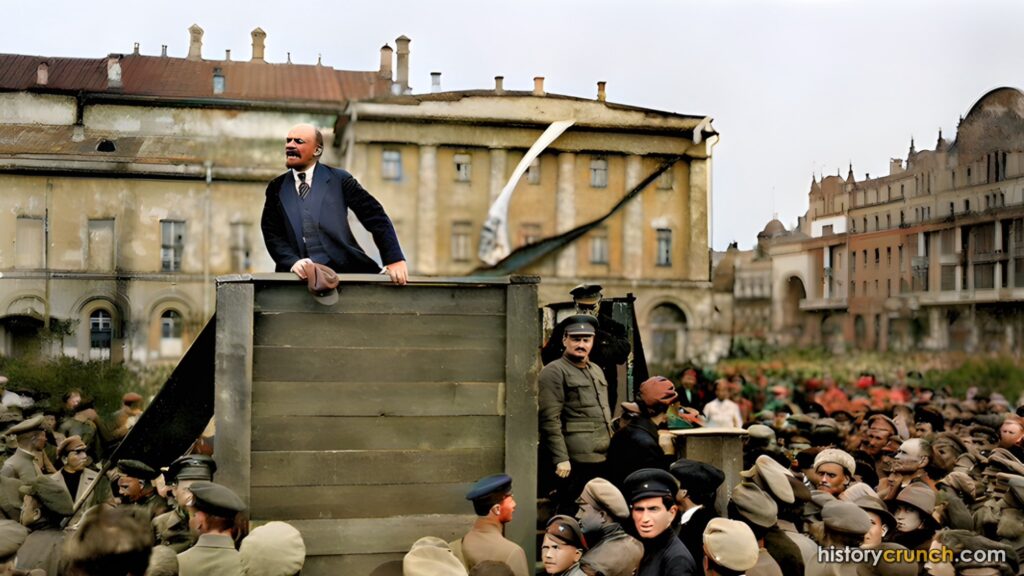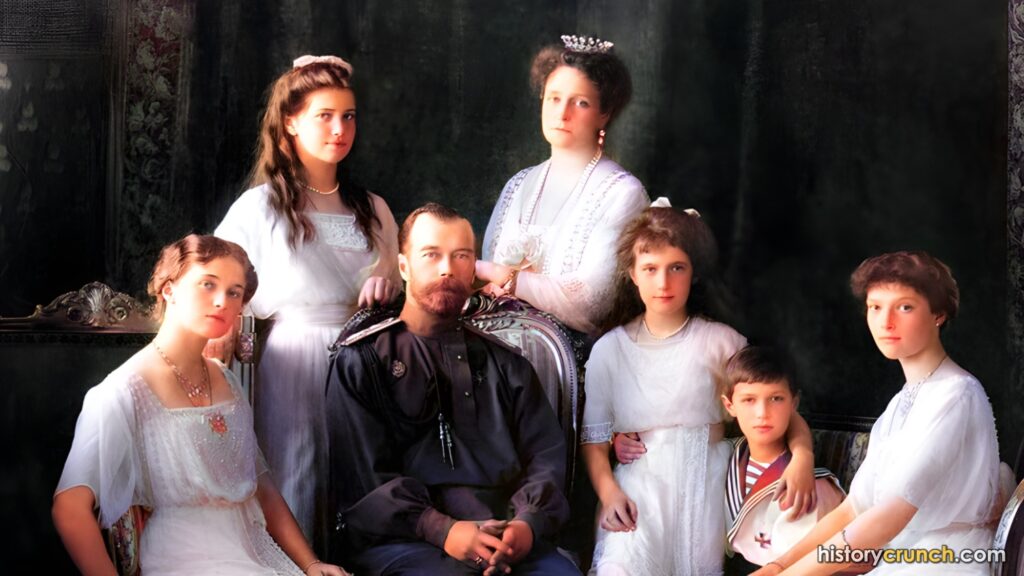Tsar Nicholas II, the last monarch of Russia, lived during a period of immense political, social, and economic upheaval. His reign, marked by challenges and controversies, ultimately witnessed the demise of the Romanov dynasty in Russia and the emergence of a new era in Russian history. For instance, his life and leadership over Russia is deeply linked with the events of the Russian Revolution in 1917. This article explores the life, major events, and significance of Tsar Nicholas II.
Early Life of Tsar Nicholas II
Tsar Nicholas II was born on May 6th, 1868, in Tsarskoye Selo, Russia. He was the eldest son of Tsar Alexander III and Tsarina Maria Feodorovna. Nicholas’s upbringing reflected the conservative values of his father, who sought to instill a strong sense of duty and autocratic principles in his heir.As well, Nicholas and his siblings were subject to a strict and disciplined childhood, emphasizing the obligations and responsibilities that came with their royal status.
In 1894, tragedy struck the Romanov family when Tsar Alexander III passed away unexpectedly. At the age of 26, Nicholas ascended to the throne as Tsar Nicholas II, taking on the immense responsibilities of ruling the Russian Empire.
Nicholas’s marriage to Princess Alexandra of Hesse-Darmstadt in 1894 further solidified his connections to European royalty .Alexandra, a German princess, faced some suspicion and criticism in Russia due to her German heritage, especially during times of conflict, such as World War I. For example, in World War I, Russia faced off primarily against the German forces on the Eastern front of the war.

Tsar Nicholas II Before the Russian Revolution
The early years of Nicholas’s reign were marked by a desire to continue the autocratic traditions of his predecessors. However, challenges loomed on the horizon, including economic unrest, social inequality, and the tensions that would soon escalate into the Russo-Japanese War of 1905.
The social unrest in Russia in the late 19th century also set the stage for the eventual outbreak of the Russian Revolution in 1917. For instance, the events of ‘Bloody Sunday’ in 1905 created a climate of anger and frustration towards Tsar Nicholas II from the Russian people.
At the time, industrialization had led to the growth of urban centers, and the working class, facing harsh conditions and low wages, began to demand better rights and improved working conditions. The Russo-Japanese War of 1905 further strained the country’s resources, contributing to discontent among various segments of society. On Bloody Sunday, a massive crowd, consisting mainly of industrial workers and their families, gathered in St. Petersburg to present a petition to Tsar Nicholas II. The petition called for political reforms, better working conditions, and an end to the Russo-Japanese War.
As the unarmed and peaceful crowd reached the vicinity of the Winter Palace, they were met by the Imperial Guard. Without warning, the troops opened fire on the demonstrators. The devastating events hurt Tsar Nicholas II’s reputation among the Russian people and furthered the country on the path towards revolution.
Another notable aspect of Nicholas II’s reign during this time was the influence of Grigori Rasputin, a mystic and healer, on the royal family. Tsarina Alexandra believed Rasputin could help alleviate the symptoms of hemophilia (a blood clotting disorder) in their son, Alexei. The mystic’s perceived influence led to rumors and scandals, further impacting the monarchy’s reputation among the Russian people.
The outbreak of World War I in 1914 further strained his rule, leading to economic hardships, military failures, and widespread discontent.

Tsar Nicholas II and the Russian Revolution
The Russian Revolution of 1917 began to unfold due to several factors, including: economic hardships, social inequality, political repression and the events of World War I. For example, the February Revolution of 1917 erupted amidst the backdrop of World War I, food shortages, and popular discontent towards the leadership of Tsar Nicholas II. In fact, the anger and frustration with his government eventually forced Tsar Nicholas II to abdicate the throne on March 15th, 1917. As a result, the Provisional Government took control, marking the end of centuries of Romanov rule.
Nicholas II and his family were placed under house arrest by the Provisional Government. In 1918, as the Bolsheviks gained control, the Romanovs were moved to the city of Yekaterinburg, in the interior of Russia. Then, on July 17th, 1918, Nicholas II, Alexandra, and their five children were executed by Bolsheviks, ending the Romanov dynasty. This set the stage for the era of Soviet Russia, which was led by the Bolsehviks under Vladimir Lenin.

Significance and Legacy of Tsar Nicholas II
Tsar Nicholas II’s significance lies in the pivotal role he played during a period of monumental change in Russia. His inability to address the challenges faced by the empire, coupled with his autocratic rule and reliance on Rasputin, contributed to the erosion of the monarch’s legitimacy among the Russian people. The execution of the Romanovs symbolized the end of an era, leading to the establishment of the Soviet Union and the implementation of radical political and social changes.
As such, the life of Tsar Nicholas II is closely linked with the events of the Russian Revolution and rise of communism in Russia.


